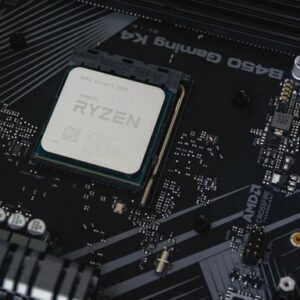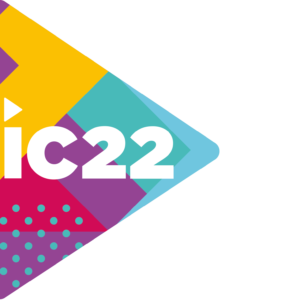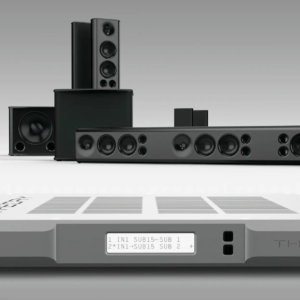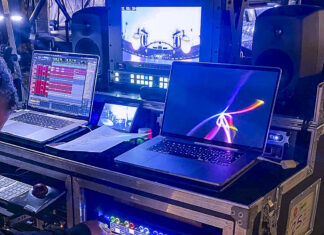Futurecasting video distribution
In the grand history of the AV community, several have come along and cried the end of this or that technology. 3D, 5 wire cabling, plasma displays. And now, the matrix switch.
Justin Kennington from the SDVoE Alliance has declared the “Death of the Matrix Switch”. He says. “ our industry stands at the precipitous of a new transition” from distributing data using matrix switches to advanced AV over IP solutions. He also calls out the commercial AV integration space as “something of a holdout” in the broader community when it comes to embracing AV over IP.
What does that mean? It means that those lovely old boxes we used to connect gazintas and gazoutas together are going away. But, I want to disagree with Justin slightly. With all due respect, the matrix switch is not dead. It has simply moved on.
Moved on is one of several euphemisms for death and dying but with the assumption that the person is not gone completely but they have simply moved to a new reality, an afterlife if you will. Today we will talk about the afterlife of the matrix.
 And in this context, the afterlife or heaven has a name you are familiar with; the cloud. The cloud is where the matrix went to die. It is the matrix version of “All Dogs go to Heaven”.
And in this context, the afterlife or heaven has a name you are familiar with; the cloud. The cloud is where the matrix went to die. It is the matrix version of “All Dogs go to Heaven”.
We still need to send gazintas to the gazoutas. But how do we do that in this new paradigm? The network. The network is the new network.
This can be anything from a cloud application that routes the desired signal to the output. In education, where my background lies, we would install hundreds of wallplates with RGBHV in either 5 wire or VGA connection, HDMI, and display port connections. These would be wired back to the old matrix. But it’s gone.
Now, the connection is what we used to call a “network jack”. An RJ45. But, how. Several different ways. This can be done with a special encoder, and SDVoE manufacturer for example, that encodes the video signal into bits and bytes. These are then sent through the network, or cloud, to a receiver. This can be a stand-alone device or embedded decoder in a display. From there the information is decoded and you see a picture.
But, it doesn’t have to be. There is software now that allows you to encode the computer display and stream it from the source. Now, this is currently only available in certain computers but it could be, in theory, deployed to sources; BluRay players, document cameras, and wireless connectivity.
Now the video is in the cloud in 1s and 0s. Floating in the ether. Right above you. Let’s get it off the “information superhighway”. Well, a private highway.
The signals travel through the switches and down another pathway to the displays. From here we have a couple of options. In an SDVoE system that currently means landing in a decoder made by the manufacturer and from there to a display. That means a video wall, projector, or display. I said currently. Imagine if you will a projector or display with nothing more than an RJ45 jack in the back to put it on the same network. But that isn’t possible. Is it? Of course, it is. For years manufacturers have embedded the ability to decode streaming signals from sources streaming or directly from a mobile device or laptop. It would be relatively simple for an SDVoE member to create this technology. If only SDVoE had a member that created displays. You know, like Christie and Sony just to name two.
But, you may say, that’s a point of failure. I can’t troubleshoot that. Actually, no. This design is actually fewer points of failure. Let’s talk about the legacy design of a video distribution system.
You have a source. Let’s say it’s a PC at the podium in one of your lecture halls. From the PC you plug in an HDMI cable and plug that into the wall. You aren’t field terminating that wall plate but either plugging in another HDMI cable or the wall plate is a transmitter for transmitting the signal over twisted pair.
This goes up to a physical matrix by either the twisted pair or the HDMI. From there, there are internal switches that happen and put the video onto another HDMI or twisted pair cable. From there it goes to the projector to a receiver. In the receiver, it is plugged into the projector. That’s 5 or 6 points of failure for you to troubleshoot. In this new design, there are two. PC to network, network to display.
So, you’re ready now to go out and rip out all of your old matrix boxes and throw them in the trash. I mean, recycle them. Let’s not do that.
This may be simplistic but replace as you refresh. When I was a technology manager we had a refresh cycle of 7 years. That meant every seven years a system got overhauled in our 200 plus spaces. Don’t run home and rip out all of your physical matrixes. However, as you refresh those systems that require newer technology, assess whether it makes sense to replace those old matrix systems. The signals being passed over the network has matured to the point where both the manufacturers and integrators are able to successfully manufacture and deploy video over the network, completely bypassing the physical matrix. It isn’t the future, it’s now.
Tim Albright is the founder of AVNation and is the driving force behind the AVNation network. He carries the InfoComm CTS, a B.S. from Greenville College and is pursuing an M.S. in Mass Communications from Southern Illinois University at Edwardsville. When not steering the AVNation ship, Tim has spent his career designing systems for churches both large and small, Fortune 500 companies, and education facilities.









